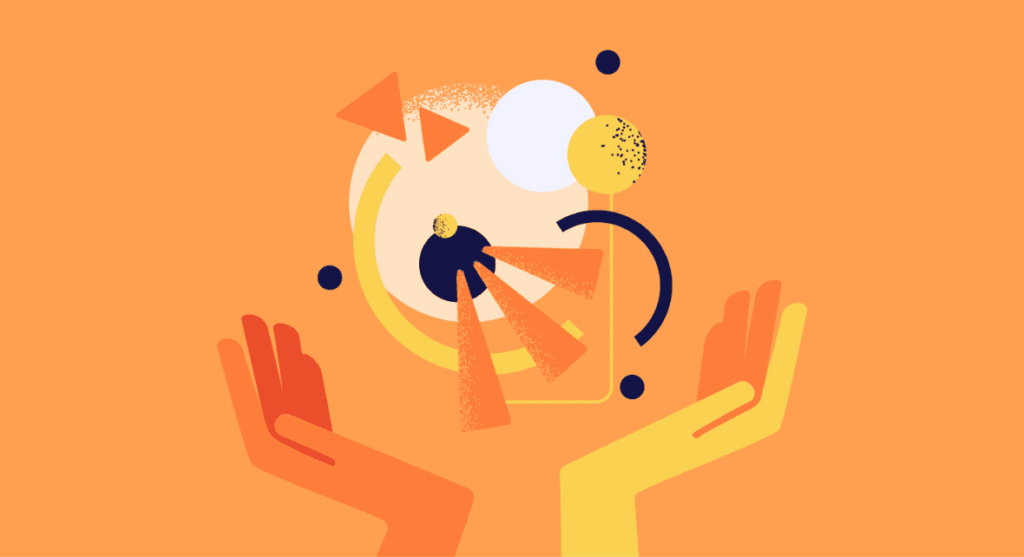Companies become more and more concerned with their efficiency and performance when compared to their competitors. Thus, every company's department needs to have the best practices and help the business achieve the best results, including UX Design.
In this article, we will explore the insights from The Business Value of Design, a study by McKinsey that shows 4 essential pillars for UX Design to deliver more value to the company!
1) UX Design is more than a feeling, it is analytic leadership
The first value pillar of UX Design is about an analytical profile ahead of a superficial perspective.

Many companies are still not giving the proper focus and importance to UX Design in their projects. Thus, the decision-making about user experience is often based on feelings and assumptions, while it should be based on research and tests.
Now, if any other area of the company should make decisions based on facts and data, why should it be different regarding the experience our users go through when interacting with our products?
The research shows that companies that treat design with criteria similar to the financial areas are more successful in their results and performance.
Therefore, to improve the company's results, the UX Designer must think about the following questions:
- Analytical Profile: show how important it is to rely on research methods and analytical tools to make decisions. After all, UX Design is not about personal taste;
- Promoting UX Design: show all stakeholders how UX processes bring important results to the business;
- The user at the center of everything: 40% of the companies do not talk to the final users during the development of their projects. It is essential to bring User-Centered Design into the company. Therefore, decisions can be more objective and assertive.

2) UX Design is not just about products, it's about user experience
The second value pillar may seem quite obvious to UX designers. But for companies, this is still a very difficult issue to understand: the user experience.
According to the survey, 50% of the companies interviewed said they conduct user studies and tests before starting their projects.
In other words, half of the organizations don't seem to understand how essential user experience is to their success.
Therefore, it is necessary to put everything about the user experience on the table and show that it is the essence of UX Design. And most importantly, it will make your company stand out with products and services that meet your users' real needs.
Only this way will you be able to add value to the projects and bring more results to the company's business.

Besides working with research and testing, it is important that you build the User Journey. This tool is crucial for understanding user behavior and how they interact with the product.
Thus, as a designer, you can add value to companies with your in-depth UX design knowledge. Always remember to take into account the User Journey.
Reading tip: Usability: How To Develop A User-Friendly Website
3) UX Design is more than a department; it's a multidisciplinary talent
The third pillar concerns the multidisciplinary look over UX Design.
The stereotype of the isolated designer, doing only his job without collaborating with other areas, is starting to change.
Ideally, the UX Design area should be in constant contact and alignment with other areas. This alignment is essential to make clear the company's objectives, as well as its goals and perspectives.
Thus, to add value to the company, the concept of the T professional is becoming increasingly common.

The T professional is the one who has his specialization but can navigate through the other areas of the company, such as Marketing, Finance, and Communication, for example.
For UX Design, the concept of a T-professional is important because it increases the capacity for collaboration, improving relationships, and understanding of the business.
For companies, it is essential to have a professional who understands, even if not thoroughly, their various areas.
This way, the T-profile UX Design professional can align his skills with the company's goals, bringing more assertiveness to the business.
4) UX Design is more than a step; it's a continuous iterative process
The fourth value concerns UX Design processes related to the continuous improvements of products and services.

Many companies spend a lot of time on the early stages of product development. But they forget to keep iterating processes in order to improve and optimize them.
Their idea is based on the concept of launching a perfect product. So it's common to see companies investing a lot of time and money, without even testing prototypes with end users.
McKinsey research shows that 60 percent of companies use prototypes of their products only in-house. They don't bother to test with users to understand whether they are on the right track or not.

Therefore, the Designer needs to understand and show that striving for perfection of a product at early development is unnecessary and, in fact, a waste of time and money with rework.
In the early stages, it is far more important to establish tests and surveys with end users and to launch an MVP (Minimum Viable Product).
So after the initial launch, it is important to continue testing and researching user interaction. Then capturing information to continue improving and updating your product.
Therefore, thinking in iterative processes is essential for the company, because it will reduce its initial development time and, over time, it will be able to add value to the consumer with a more assertive product.
Reading tip: User Journey Map: Understanding and Improving Interactions
The most important step
Although many companies implement some of the pillars above, few are the ones that manage to harmonize all 4 and leverage their results.
The role of the UX Designer, therefore, is to be aware of all these key points and implement them in the company's processes.
Of course, this process is unlikely to be completed overnight. But little by little, the results will start to appear, and the company will understand more and more how UX Design is essential to the company's results.
McKinsey's research revealed an important thought for those who want to start implementing these 4 pillars.
The company, along with UX Design, must think of a new product/service and commit to developing it through the 4 pillars above. By doing so, the mindset and processes will begin to be considered as part of the company and not just an isolated piece.
Why is UX Design important for business?
In a growing UX Design market, companies are starting to realize the impact and importance of UX in their processes.
As this article shows, UX Design adds value to a company's business and products; among the many positive impacts, we can mention:
- Greater efficiency in processes and improved product quality;
- Increased revenue;
- Improved innovation processes;
- Customer loyalty, since users are the focus of UX design.

On the other hand, it is important that the UX Designer also adapts to the corporate environment. Therefore, besides the essential technical skills, it is also very important to improve behavioral skills – Soft Skills – such as:
- Communication;
- Teamwork
- Leadership;
- Empathy.
Reading tip: Building Prototypes: What’s The Best Type For Your UX/UI Project
About McKinsey and the research
McKinsey is a company that provides business consulting services and is widely known in the market.
In addition to providing consulting services, McKinsey conducts several studies of various markets, trends, and sectors.
One of these studies was The Business Value of Design, which served as the basis for the content of this article.
This study followed the practices of 300 companies over a period of 5 years.
In addition, correlations were made between UX Design practices and financial performance to identify which actions are most valuable and require attention.








